The brake booster is an important and indispensable part of the brake system. It is installed in the position between the brake pedal and master cylinder with the task of reducing the reaction of the brake pedal and amplifying the pressure from the brake pedal, thereby helping the driver perform the brake pedal operation lightly. softer.
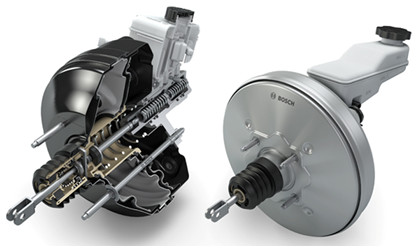
Therefore, to stop the vehicle, the brake system such as brake pads will press on the brake disc with maximum force The driver does not need to apply too much force on the pedal.
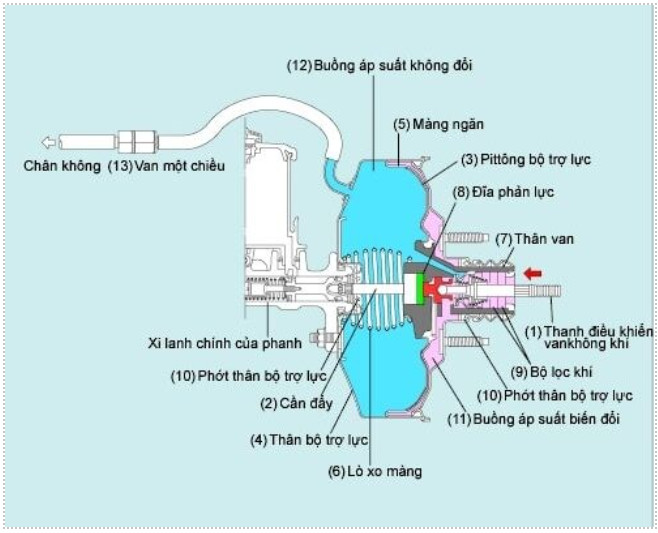
The principle of operation of the booster bulb of the car brake
The operating principle of the brake booster is based on the difference between the atmospheric pressure and the vacuum of two separate chambers, to create a strong force (increase force) proportional to the force of the pedal.
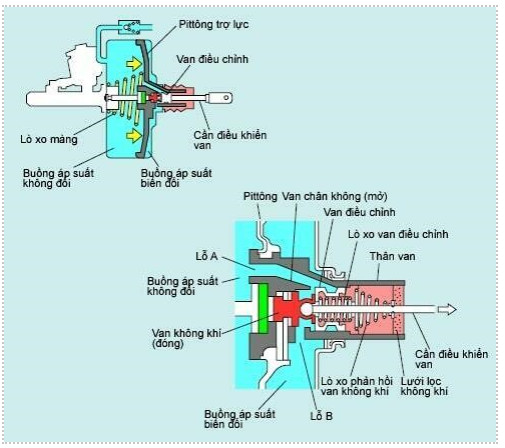
Air valve connected with Valve control lever and suffer Air valve feedback spring drag to the right. Regulating valve bi Adjusting valve spring push to the left side.
In this condition, vacuum valve of the valve body is separated from regulating valve, forming a passage between the two chambers. Because there is no differential pressure at this time, the booster does not operate.
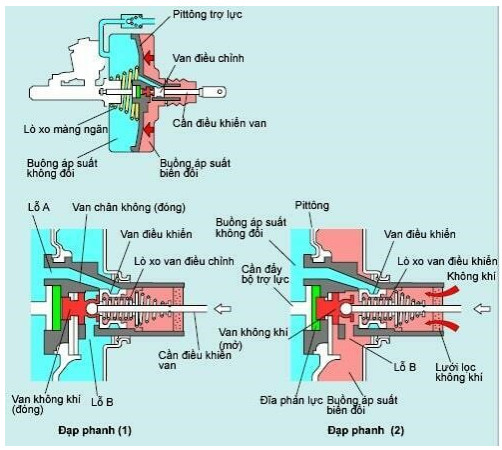
When pressing the brake pedal, joystick to push air valve move to the left. Adjusting valve spring also push control valve move to the left, until it comes into contact with vacuum valve. This will seal the passage between the two chambers.
when the air valve Keep moving to the left, the farther it gets control valve allowing outside air to enter inside variable pressure chamber through hole B (after passing through the air filter).
Pressure difference between constant pressure chamber , and variable pressure chamber cause booster piston move to the left. This makes booster push lever moves to the left and increases the braking force.
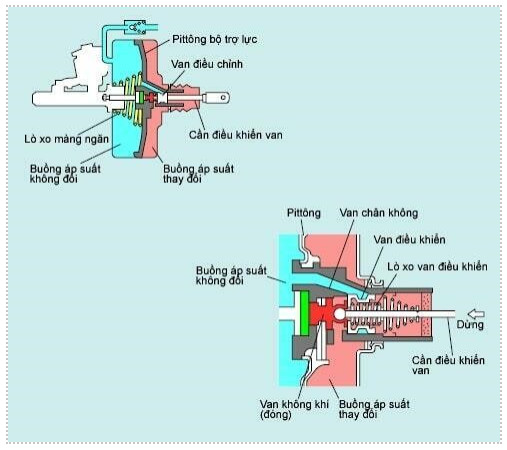
When the brake is held, valve control lever , and air valve will stop teleporting, but booster piston continues to move to the left due to the pressure difference. Control valve spring causing this valve to remain exposed vacuum valve, but it moves with the piston.
Because the control valve move to the left and make contact with air valve, outside air will be blocked and will not flow in variable pressure chamber. So the pressure in the pressure chamber changes stably, from which the pressure difference does not change between the two chambers, piston Stop moving and maintain braking force.
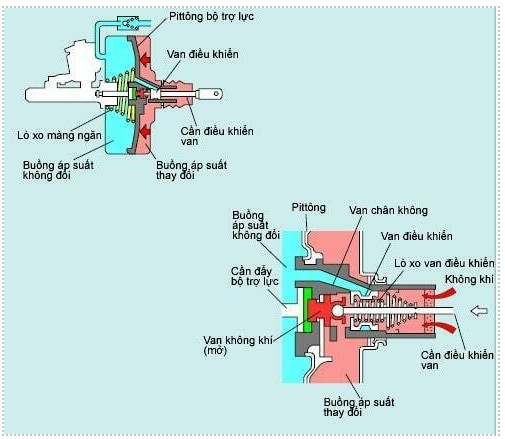
When the brake pedal is fully depressed, air valve will move completely away control valve, the variable pressure chamber will be filled with air instantaneously. Therefore, the pressure difference between the two chambers will be the largest. This creates the greatest support.
After that, no matter how much force is applied to the brake pedal, the assistance force will not increase, the additional force can only be exerted by the driver.
Common damages
Cars Care Service Price Sheet At Thanh Phong Auto HCMC VietNam:
* The cars that we have mechanics: Mercedes, BMW, Audi, Lexus, Toyota, Honda, Mazda, Mitsubishi, Kia, Daewoo, Hyundai,Ford, Nissan, Volkswagen, Porsche, Chevrolet, Rand Rover, Innova, Fortuner, Vios, Fiat, Bugatti, Ferrari, Bentley, Hummer , Chrysler, Dodge, Renault, Cadillac, Volvo, Subaru, Daihatsu, Ssangyong, Roll-Royce, Peugeot, Smart Fortwo, Tobe M'car, Luxgen, Zotye, Haima, Geely, Baic, Hongqi, Cmc, Mini Cooper, Buick, Opel, Acura, Aston Martin, Vinfast, TQ Wuling.
To keep your vehicle running properly at all times, we offer a number of services that are carried out by our certified, expert auto service and repair technicians who have years of experience performing everything from oil changes to a complete engine overhaul.
LEAVE COMMENT